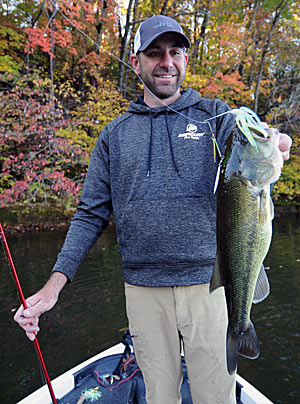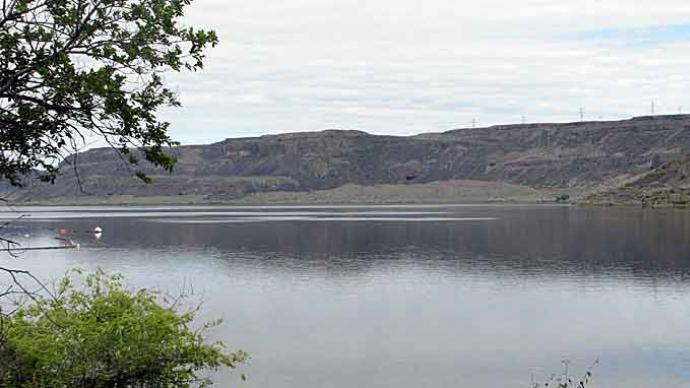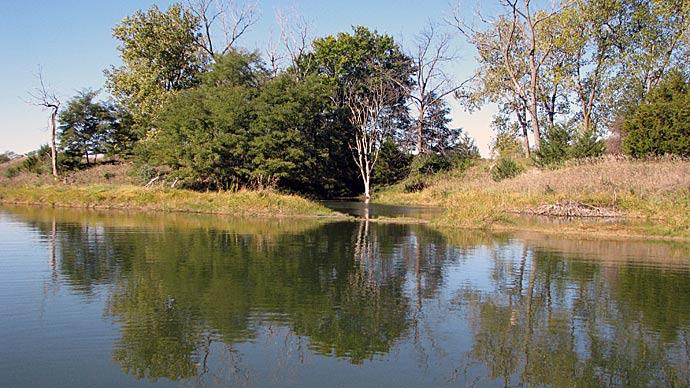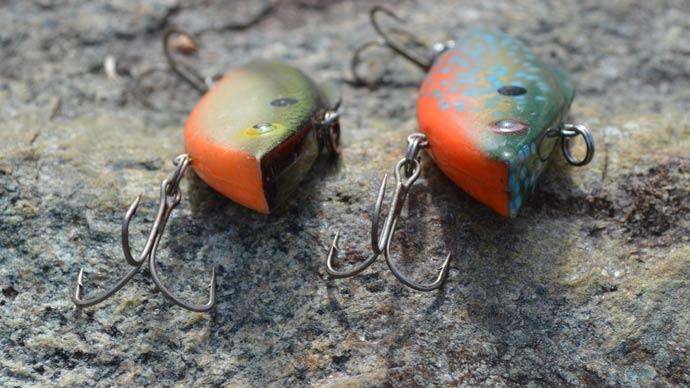
Visit any bait-and-tackle shop throughout the fall, and you will hear anglers lament how the lake turnover prevented them from catching bass.
FLW pro Casey Scanlon has noticed throughout his years on the tournament trail that the bite gets much more challenging when the water turns over in the fall.
An explanation of the turnover process helps anglers understand why fishing gets tougher during this fall phenomenon. According to Dr. Hal Schramm, a U.S. Geological Survey fisheries research biologist, the fall turnover is actually a misnomer. “The lake doesn’t turnover per se. It mixes,” he says.
The turnover process originates in the summertime when certain lakes stratify because the water changes density with warmer temperatures. “With stratification, there is warm, less dense water floating on cooler, more dense water,” says Schramm.
The heat of summer causes some lakes to stratify into three layers. The upper zone, known as the epilimnion, is composed of warm, lighter water and is well-oxygenated. The middle layer, or thermocline, is a zone of rapid temperature change and dissolved oxygen levels. The lowest layer, the hypolimnion, contains the coolest and densest water of the three zones. Dead plants and animals sink to the hypolimnion, and the decomposing organic material uses up the dissolved oxygen in this zone.
During the fall, cooler weather and shorter periods of daylight cause the surface waters to cool. “When the upper zone cools to the same temperature as the bottom, so there is no density difference anymore, stratification breaks down,” says Schramm. “That allows the entire volume of similar densities and similar temperature water to mix, which is turnover.”
Schramm suggests anglers can predict when the turnover will occur by dropping a temperature probe down to the hypolimnion during the summer. If the water temperature of the bottom zone is 59 degrees, anglers can tell in the fall if turnover is near when they launch their boats in the morning and the surface temperature closes in on the 59-degree mark. “Get ready because it is going to turn over,” says Schramm. “When it gets within a degree or two, and you get a breeze, it will mix.”
When the water layers mix, high phosphorous levels from the bottom zone rise to the surface. The combination of high phosphorous and sunlight usually triggers an algal bloom, creating the pea-green water color that anglers associate with lake turnover. However, the algal bloom occurs weeks after the turnover. “Algae don’t respond like turning on a gas stove,” says Schramm. “It takes a week to two weeks to develop, just like when you give your lawn a shot of fertilizer. You will have to water it a couple of times before you see that grass green up, and it’s the same deal (with an algal bloom).”

The mixing process also might cause decomposing matter from the bottom to rise to the surface. As the organic matter continues to decompose, the process strips oxygen from the water and, in severe cases, could lead to a fish kill. Schramm is unaware of any tests on how low oxygen levels affect bass, but he theorizes that oxygen depletion caused by turnover probably makes the fish more lethargic. “It will affect their desire to feed and maybe their aggressiveness,” he says.
Scanlon looks for tell-tale signs indicating the turnover. “You will see some moss-type debris on the surface where your lures are getting fouled in it, and it seems to be a pea-green water tint,” he says. “A lot of times, it will often have a film on top of the water.”
The turnover occurs in stages on larger lakes, starting in river sections or backs of creek arms and eventually trickling down the lake. When a lake is turning over, Scanlon either heads to a section of the lake unaffected by the turnover or fishes along the edge of the turnover. “It seems like a lot of times the turnover is visible, and you can see the difference in water clarity,” Scanlon says. “If you can fish right on the edge of the turnover where that water is mixing, it seems much better than fishing in that turnover water.”
Scanlon recalls fishing Truman Lake last fall when he could pattern bass on the edges of turnover areas. He noticed each day that the turnover in the backs of creeks was moving out to the mouths of the creek, and he would catch bass within 20 or 30 feet of the turnover water. “They seemed to be relating to that edge, almost like it was a mud line,” he says.
Targeting extremes in the water column is a key to succeeding during turnover “You can stay ultra shallow or ultra deep,” Scanlon says. He also suggests fishing the main lake, which has more stable water conditions than the creeks and coves.
“You have to play that day-by-day, but in general, the fish tend to be shallow in the fall,” Scanlon says. “So I try to chase those shallow fish and look for areas less affected by turnover or areas that turned over a week ago and are more stable.”
His favorite lures for fishing around the turnover are a 1/2-ounce spinnerbait in white or white and chartreuse, a buzz bait, and a brown or black-and-blue 1/2-ounce jig and plastic craw trailer. A square bill crankbait and a loud topwater plug are other productive lures for throwing along the turnover edges.
Areas affected by turnover usually clear up after a week or even overnight if a strong wind sweeps through the area, so Scanlon recommends moving around the lake to find the cleanest water. “Keep a close eye on what the water color looks like and where those turnover areas are,” he says. “If you are getting bites right outside those areas and not getting as many bites where you can see the turnover occurring, you can start to get an eye for where you need to be and where the fish are.”
Then you can use the turnover to your advantage by fishing the edges.




